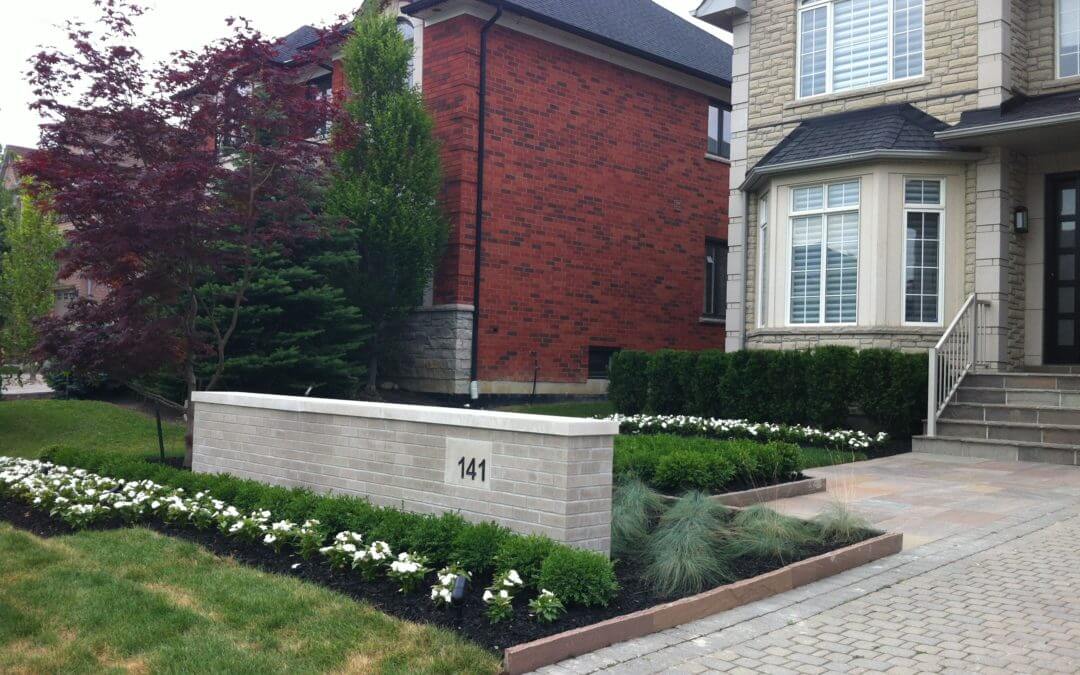It is nice to know that the spring of 2014 will soon be here; greatly anticipated after this really cold and icy winter!! Many homeowners will be thinking about either a renovation of an existing landscape or a whole new landscape design to compliment a new home. There are many things to think about when deciding on what you would like your outdoor space to look like and this article will take a specific look at the gardens. The gardens are the finishing touch to your new landscape. It is the gardens that pull the landscape together and make it shine! Do some of your own research before talking with your landscaping professional. First consider the style of your home. Perhaps your home is very specifically designed in a modern, formal, traditional or country/ranch style. This is where your inspiration begins. Then check out your neighbourhood. Are there any gardens that really catch your eye? Look at similar homes to yours and see if you like the style of gardens and selection of plants, shrubs and trees. Then spend some time collecting photos that appeal to you. Magazines are helpful and today there are many websites and Apps that are fantastic for collecting inspirational photos. A popular one is Houzz. On this site you collect photos and store them in your own personal album that can be easily shared with your landscape designer, landscape architect or landscape contractor. Also jot down the top ten words to describe your new gardens, as this list will come in handy when communicating what you envision your gardens to look like. Example words could be: colourful, vibrant, natural, manicured, tranquil or peaceful. You could also think about what you want to do with your gardens. Some examples might be: I like to pick flowers, I like to look at my gardens or I like to work in my gardens. This process is very exciting! For today’s architecture, here are four popular garden styles that are suitable for the majority of homes found in Toronto and the surrounding GTA. Modern Streamlined, sleek, sophisticated are descriptive words for this style of garden. There is a sense of order to these gardens with a simplified plant selection. Plants are chosen for their architecture and visual interest and are planted in masses. Plant colours are usually kept to shades and hues of greens, or a limited colour palette. Pops of color are established with containers, furniture cushions or vibrant painted accessories. Plants are planted in clean, straight lines and an orderly manner to avoid a cluttered look. Contemporary Formal This is a traditional garden design made current. It has symmetry that defines a formal garden. Perfect tidiness describes a formal garden style. Design elements include trees planted in straight lines, hedging that borders walkways and focal points. Focal points can a water feature, a seating area or some sculptural art. Gardens are geometrically balanced and proportionate with size and plant selection. The gardens are minimalistic with strong shapes and texture. Using different shades of the same colour is always a nice option and the plants are arranged in masses in an orderly fashion. Modern Country Originally country gardens consisted for fruit trees, vegetables, herbs and the flowers were merely fillers! Today the Modern Country gardens are densely planted with a mixture of shrubs, perennials, annual flowers and vegetables. There is a wide selection of plants that are low-maintenance and child friendly, ideal for the suburbs or country estates. Modern Country gardens are functional and attractive and usually informal in design. Gardens may have curved or straight lines. Keep in mind this is a fun and flexible garden style so mixing some elements of the formal and informal styles in the same landscape is always an exciting possibility. Contemporary Natural Although this style of garden seems random, it well thought-out and is inspired by nature. This particular style can be used for a suburban backyard or perhaps as a small feature within a very large property. Natural gardens tend to have layers of plantings similar to nature including trees, shrubs, perennials and ground covers. Plants overlap and harmonize. This style of garden is designed to create an environment which is aesthetically pleasing, with a mixture of native and non-native plants and always non-invasive varieties. Once you have decided on a garden style, plant selection will then depend on the specific site conditions. Sunny or shady, dry or wet soil conditions, specific micro-climate and wind conditions. Expert advice is always recommended when selecting trees, shrubs and plants. You will be living with your new gardens for many years so it is a good idea to initially make the best plant selections you can. That way you can enjoy the fantastic evolution of your new landscape for many years to come. By: Shirley
Recent Posts
Archives
- July 2017
- March 2017
- February 2017
- January 2017
- June 2016
- May 2016
- April 2016
- March 2016
- February 2016
- January 2016
- September 2015
- August 2015
- July 2015
- May 2015
- April 2015
- March 2015
- February 2015
- January 2015
- October 2014
- September 2014
- August 2014
- July 2014
- May 2014
- April 2014
- March 2014
- February 2014
- January 2014
- December 2013
- November 2013
- September 2013
- May 2013
- April 2013
- March 2013
- February 2013
- January 2013
- December 2012
- November 2012
- October 2012
- September 2012
- August 2012
- June 2012
- May 2012
- April 2012
- March 2012
- February 2012
- January 2012
- December 2011
- November 2011
- September 2011
- August 2011
- June 2011
- May 2011
- April 2011
- March 2011
- February 2011
- January 2011

